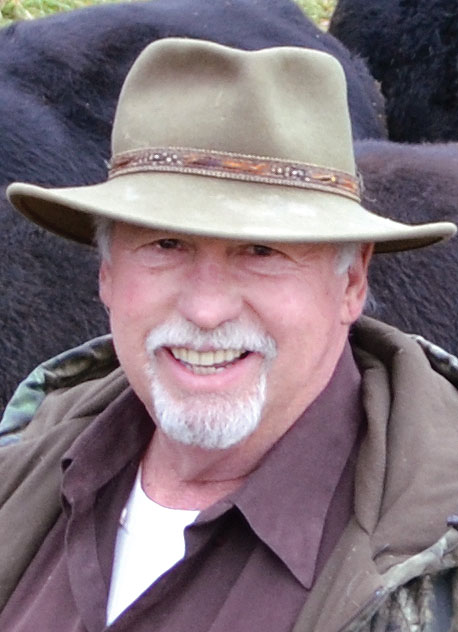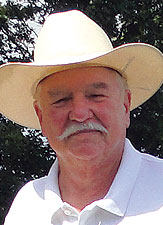
One glance across the beautiful golden green rolling hills that make up the 2,500 acre Rambling River Ranch owned by Jerry and Gisela Hiland in rural Camden County explains why the former California residents bought this land and traveled back and forth for years, beginning in 1978. “I’m a pilot and I’d fly back every few weeks,” the now retired, full-time Missouri resident and cattle rancher explained recently while sitting in his home with his own panoramic view of the Ozarks. “I was in the retail business back then, working for IBM and then operating a chain of retail cigar stores. My son still has a cigar store in Scottsdale, Ariz., and does a big mail order business but I always had a love for the cattle business. I did my research before buying and although it varies a bit, Missouri is always one of the top states for cattle and cow-calf operations.
“Of course, none of us are exactly sure what to do right now because we don’t know how long these cattle prices will stay up but as long as they do….” He finished with a big smile.
“Right now, we have about 120 Black Angus that are crossbred with a horned Hereford bull. I lease out about 500 acres and have another 400 in pasture. I’ve had as many as 400 head but honestly, I don’t want to work that hard anymore. I cut a lot of hay and have four hay barns on the place.” The Hilands’ farm is bisected by the Dry Glaize, a waterway that can run as deep as 15 feet during flood stage but is more often a creek, crossing the property and accounting for the ranch’s colorful name.
“I sell hay to a few horse people in the area. One of the former owners of this property, Dr. Claiborne rode his Fox Trotter to make house calls. You lose 30 to 40 percent of your hay quality by leaving it outside so I keep mine inside. You can pay for a hay barn in short order, selling better quality hay and it smells better, too.”
In addition to the cattle business, Jerry also makes use of his forested land to meet another popular demand in the Ozarks. “I lease acreage to White Tail Inc., for deer hunting each year. They only take the bigger animals and are here for just the first three days of deer season.”
Jerry also serves as a distributor for a baked mineral supplement that he uses with his own cattle. “The first time I used this product, I liked it so much I decided to sell it myself, to family and friends,” he continued. “With other supplements I found that they were often wasted if the weather turned rainy after you put it out or if the animals turned it over. This product is in a tub, with a molasses base and it holds up well, even in the rain. The deer also love it. You can always see their hoof prints around the tubs and they took some big deer here, this past season, so it apparently works for them, too.”
Jerry attended grazing school years ago and plans to do so again this coming spring. “I practice intensive grazing and I’d like to work more closely with wildlife conservation.” He also has plans to add A.I. (artificial insemination) to his operation this coming year as one more way to improve his herd.
“You have to maintain your soil,” Jerry added in closing, “and do your soil testing each year before you fertilize. That will certainly save you a lot of money,” referring to the soil’s pH content which should remain slightly acidic for the best forage growth. “You want to keep your soil at about a 5.7 level. I once heard an old farmer say, ‘you can’t starve a dollar out of a cow.’ I’m still not sure what that means,” he concluded with a laugh, “but for some reason, it always stuck with me. Certainly not wasting money on tons of fertilizer when you don’t need it, is one more way to save a few of those dollars.
“I like to keep it all as simple as possible. I don’t expect you’ll get rich in the cattle business any more but it is an enjoyable way to make a living. I make less now than I ever have but I’m happier doing something I really enjoy.”







